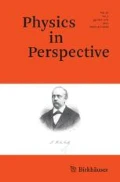At the annual meeting of the History of Science Society (HSS) last fall in Chicago, a lecture by the historian and physicist Lillian Hoddeson brought into sharp focus a question that usually remains in the margins of scientific practice. Her paper described the career of the inventor Stanford Ovshinsky, who lacked formal training in science, disrespected disciplinary boundaries, could not write equations, and was concerned that his work should make social contributions. This, Hoddeson informed the audience, prompted several more conventional scientists to dismiss Ovshinsky as “not a scientist” and his work as “not science.” When Hoddeson sought out the judgment of other scientists, though, one of them turned the judgment on its head, declaring that “what Stan does isn’t science. It’s more interesting than science.”
As the Ovshinsky tale reveals, the boundary between science and non-science is not as clearly drawn as that between, say, the United States and Canada. He was studying the properties of amorphous materials (such as glasses), which fell outside the normal disciplinary boundaries of the time. The boundaries within science, too, are not neat, and can affect not only the practice of science but even what counts as science at all—strangely, as if the way one drew the borders between individual states in a country affected its national boundaries. Joseph Martin’s article in this issue provides an excellent example. He argues that terms like “solid state physics,” “condensed matter physics,” and “materials science” (not to speak of “many-body physics,” another term once popular) strongly shape the character and progress of research, yet how such terms are defined owes much to professional ideologies and contingent contextual goals. Martin helps us contemplate the complex interactions that go back and forth across the disciplinary boundary in question, whose names sometimes reflect new initiatives (and the hopes motivating them) but in turn sometimes affect what counts as interesting or even valid science. Thus Ovshinsky’s work presumably was “not science” because it dealt with amorphous materials that lay beyond the current scope of “solid state” or “condensed matter” physics, oriented more towards regular crystalline materials. What was so interesting about what he was finding led to the further realization that it was “more interesting than science” because the current limits of “solid state physics” kept amorphous materials beyond the pale of scientific work.
“What’s in a name?” Juliet’s answer to her famous question is that names are arbitrary: “A rose by any other name would smell as sweet.” But she knew better; names have origins and effects. In science, names are often significant not as arbitrary labels but as bearing, often implicitly, some deeper understanding. Thus Lavoisier, at the beginning of modern chemistry, asserted the power of finding new and more appropriate names for important scientific concepts and entities. In the preface to his Elementary Treatise of Chemistry (1789), he wrote that, “as ideas are preserved and communicated by means of words, it necessarily follows that we cannot improve the language of any science without at the same time improving the science itself; neither can we, on the other hand, improve a science without improving the language or nomenclature which belongs to it.” Think of the significance contained in two words Lavoisier coined, “hydrogen” and “oxygen.” Their power comes not merely from their etymologies (“water maker” and “acid maker”) alone but from the whole conceptual structure within which they draw meaning. Martin likewise invites us to contemplate the full implications of the shift from “solid state physics” to “condensed matter.”
Physics in Perspective both by name and design continues to offer common ground on which the history of the physical sciences might flourish. Our pages include both studies that examine the “internal” developments that loom large for scientists themselves as well as examinations of the enveloping social and cultural milieus that so often play a significant role in science itself. The quest to understand nature is finally a human activity, sometimes all-too-human, even as it reaches towards laws that transcend human limitations. In this regard, stories such as David Cassidy tells of the relationship between Werner Heisenberg and Carl Friedrich von Weisäcker help us understand not only the protagonists of twentieth-century physics but the profound human situations that shaped them and, finally, their physics as well, not to speak of the world that physics then affected.
This journal focuses on articles that examine what happens at the national and regional boundaries of science, how science and scientists emerge from their cultural, historical, and social context as well as from preceding work in science. This journal treats boundaries not as preordained or taken for granted, but as arising out of scientific practice itself, capable of shifting and changing. These boundaries can resemble the slopes and saddles between mountain peaks: where does the peak end and the valley begin? Each defines the other.
“We learn how to do science,” Steven Weinberg writes in his new book, To Explain the World, “not by making rules about how to do science, but from the experience of doing science, driven by desire for the pleasure we get when our methods succeed in explaining something.” This journal is about people who describe that experience, in its broadest sense.
Author information
Authors and Affiliations
Corresponding author
Rights and permissions
About this article
Cite this article
Crease, R.P., Pesic, P. Editorial: “But Is It Science?”. Phys. Perspect. 17, 1–2 (2015). https://doi.org/10.1007/s00016-015-0154-z
Published:
Issue Date:
DOI: https://doi.org/10.1007/s00016-015-0154-z

